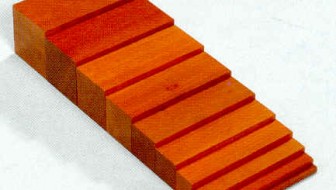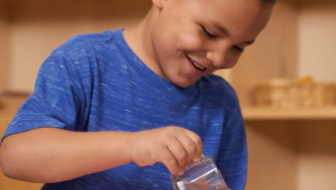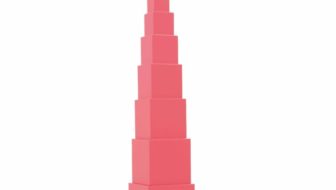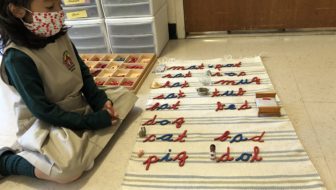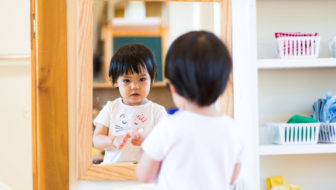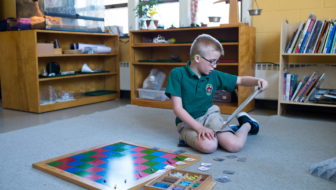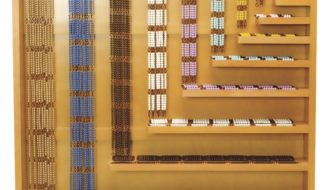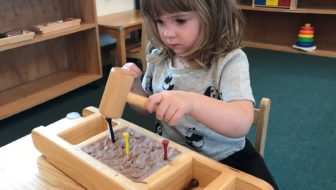The brown stairs are ten wooden brown prisms that are all the same length, but vary in breadth and height.
The student scatters the ten prisms on a mat and then proceeds to place them in their right order of graduation upon the same mat. These kinds of activities help the student to develop a ...
[Read more]
Water Pouring
Through the water pouring exercise, the child gains a wonderful sense of left to right eye-hand coordination and concentration.
These exercises consist of a small tray, and two or more vessels – one of which holds liquid. As a child is guided through the various levels of progression, they are ...
[Read more]
Introducing the Pink Tower
The Pink Tower is the iconic Montessori material. Often called the ‘symbol of Montessori’, it is a welcoming sign in any Montessori primary environment and a favorite with educators globally.
This series of cubes develops visual discrimination of size in three dimensions.
Exploration with ...
[Read more]
The Moveable Alphabet
The Moveable Alphabet is a material that opens the world of putting thoughts into writing for children. Maria Montessori observed children experience a sensitive period for language from birth to the age of 6. The sensitive period for writing is around age 4. With a strong foundation in letter ...
[Read more]
When Handwashing Is More Than Just Clean Hands
Toddlers love water and water play. One of the first lessons they receive at VFKH is “Handwashing as an Exercise.” Because toddlers are natural imitators, the mundane, adult tasks, such as handwashing, pique their curiosity. They want to imitate adults and master the same tasks they see them doing. ...
[Read more]
Checkerboard
The checkerboard is used for long multiplication in the lower elementary classroom. The children are already familiar with the glass beads and their values as we saw in the Bead Cabinet. Materials that represent a concept are carried through the Montessori experience.
Now the children have ...
[Read more]
The Montessori Bead Cabinet
The Montessori Bead Cabinet Material is a quintessential and defining Montessori material.
The Bead Cabinet is first introduced to Primary children as a means to sensorially demonstrate the concept of numeric measurement. For the 3-6 child, the Bead Cabinet represents a BIG work with many layers ...
[Read more]
Hammering It Up!
There are many tools we use for learning activities in our classrooms. A toddler favorite is the Clay Hammer and Tee Tray. This is an excellent exercise to practice and develop fine motor skills and hand-eye coordination. The children love it!
The Importance of Fine Motor Skills
Fine motor ...
[Read more]
